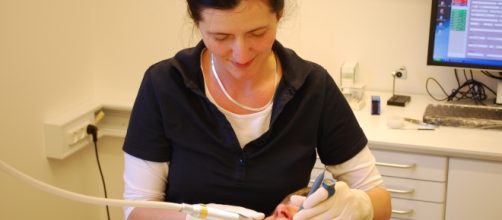Even if you don't have one right now, it is inevitable that you will get a cavity. After all, 90 percent of the American population have cavities. No matter how much oral care we practice, we cannot escape sugar. According to Forbes, in 2012 the average American consumed 3 pounds of sugar in every week. It may not seem alarming until you consider that people in 1822 consumed only the equivalent sugar found in just one of the current sweet soda drinks every 5 days. So, you cannot escape cavities. You may not even notice a cavity until you experience a throbbing pain or a shocking x-ray scan.
In such cases, a Root Canal is inevitable.
The long road for a root canal
A root canal is a procedure required for people who have a tooth infection. It is a procedure so common that it is prominently shown in pop culture. For example, in the political drama "The West Wing," press secretary CJ went to work after she got a root canal. But, you have to consider that the Press Secretary for the President of the United States has a hefty salary. CJ can afford a root canal, while on the other hand, many working class Americans cannot and opt for an extraction.
As a working class American, the gateway to hell looks more affordable than a root canal. A root canal covers three types of teeth: front, bicuspids, and molars.
Molars are the most expensive, with average prices ranging from $1,000 to $1,300. If you have a health insurance like MetroPlus, they will pay 80 percent of the root canal and you will pay 20 percent of it. However, that is only if you have a dental plan. Major health insurances, however, do not have dental cover. Even if they do have one, you are required to pay a portion of it.
Therefore, you might have to shell out your savings account.
The cracks of a dental divide
As you can see, there is a clear dental divide in our nation. A further example can be found in The Washington Post. The newspaper reported on the story of working class American, Matello, who suffered from a cracked molar. She went to a charity clinic in Salisbury, Maryland for a molar extraction.
Like Matello, many working class Americans view charity clinics as opportunities to get the dental care they need. Unfortunately, many of them had to wait in a long line. At some point, the line got too long so that some people had to be turned away. Matello got her molar extraction, but she had to wait for a long time in great pain. Meanwhile, the wealthy could easily afford the same extraction without even waiting.
It is detrimental that the rich can pay for their dental care while the working class cannot. It is a matter of injustice. Many working class Americans have grave insecurities regarding their teeth but do not have the money or the insurance. They would do anything for affordable dental care, even going in for deadly Medicaid scams. The divide would disappear if we had a single payer system but until then, the divide persists.


